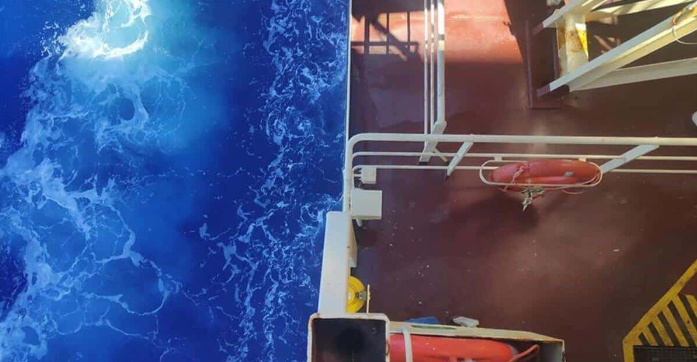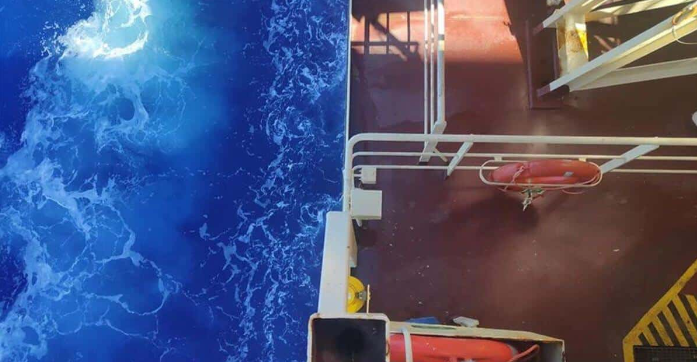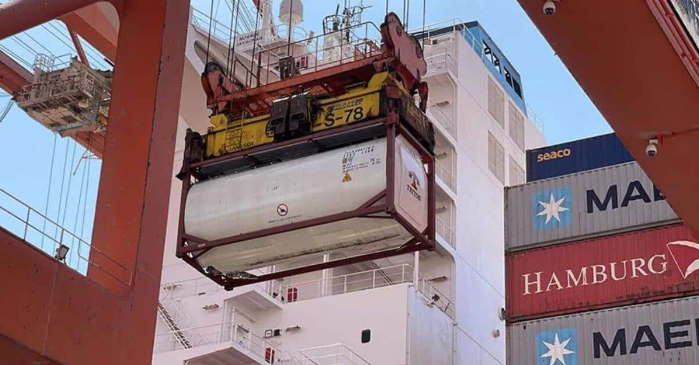▲Image credits: Maersk
淡水短缺是世界各地面临的一个日益严重的问题。
40亿人——近占世界人口的三分之二——每年至少有一个月经历严重缺水,到2025年,一半的人口可能生活在缺水地区。
在这种背景下,A.P. Moller-Maersk (Maersk)的三名员工(主要是海员)决定开展一个创新项目,该项目可以将淡水从船只储存并运送到港口。
从事国际贸易的货船有淡水产生装置。这些机器通过蒸馏海水和利用发动机产生的热能来生产清洁的饮用水。
传统上,该系统已被用于生产用于船舶消耗的水。然而,过量的水却被忽视了。
这一未开发的资源通过这样一个创新项目得到了利用,该项目优化了程序,并在港口交付之前将多余的水储存在水箱容器中。
每艘船在两个港口之间的平均海上航行中可以装满两个罐式集装箱。
通过优化程序并将罐式容器储存在船上的适当位置,两个储罐可装载淡水,累积容量约为50,000升。
在第一次试运行中,在科伦坡和塞拉莱港运送了两个罐式集装箱,每个集装箱装载2.5万升淡水。
该项目成功的一个关键因素是遵守环境和质量标准。
由斯里兰卡政府的官方实验室锡兰科学与工业研究所取样的水质符合世界卫生组织(WHO)的标准,从而强调了对可持续性和安全性的承诺。
此外,由丹麦技术大学进行的生命周期评估(LCA)分析为项目的环境影响提供了实用的见解,并将其与传统的水罐车输水技术进行了比较。
通过这样一个创新项目产生和输送的淡水可以有不同的用途:用于港口设施的清洁、卫生和办公室、卫生间和仓库的维护消耗。
船厂的船舶修理、清洁船舶、工作区域和工具;在储存或重复使用之前容器的清洗;以及港口设施发生紧急情况时的消防。
港口发电厂用于发电或其他程序的系统冷却。
此外,出于人道主义原因,可以将淡水运送到内陆地区,供严重缺水的社会使用。
▲Image Credits: Maersk
英文原文
The scarcity of fresh water is an increasing issue encountered by regions worldwide.
Four billion people — nearly two-thirds of the world’s population — experience intense water scarcity for at least a month every year, and half of the population might be living in regions encountering water scarcity by 2025.
Given this background, a team of three employees associated with A.P. Moller–Maersk (Maersk), primarily former seafarers, were determined to embark on an innovative project that can store and deliver fresh water from vessels to ports.
Cargo vessels undertaking international trade boast freshwater generator mechanisms. These produce clean drinking water by distilling seawater and utilizing heat energy harnessed from the engines.
Conventionally, this system has been used to produce water for consumption on the vessels. However, the excess water has been overlooked.
This untapped resource is capitalized on through such an innovative project by optimizing the procedure and storing excess water in the tank containers before delivery at the ports.
Each vessel can fill up two tank containers on an average sea journey between two ports.
With the procedure optimized and the tank containers stored at the proper location on the vessel, two tank containers with a cumulative capacity of about 50,000 litres can be loaded with fresh water.
Among the first pilot runs were deliveries at the ports of Colombo and Salalah of two tank containers, each loaded with 25,000 litres of fresh water.
A crucial element of the success of this project is its adherence to environmental and quality standards.
The water quality, sampled by the Ceylon Institute of Scientific & Industrial Research, an official laboratory of the Sri Lankan Government, satisfied World Health Organisation (WHO) standards, thereby underscoring the commitment to sustainability and safety.
Moreover, a Life Cycle Assessment (LCA) analysis conducted by the Danish Technical University has furnished practical insights into the project’s environmental effect, comparing it against conventional tanker truck water delivery techniques.
The freshwater generated and delivered via such an innovative project can be used in different ways: Consumption at the port facilities for cleaning, sanitation, and maintenance of offices, restrooms, and warehouses.
Ship repairs at the yards, cleaning vessels, work areas, and tools; container washing before storage or reuse; and firefighting at the port facilities in case of emergencies.
Power generation at power plants in ports for cooling systems or other procedures.
Besides, fresh water can be distributed for humanitarian reasons by transporting it to the hinterland for use by those societies suffering acute water scarcity.
免责申明:本文根据Maersk等内容整理,如有误差,以英文为准;仅代表作者观点,不代表中国海员之家立场。其真实性及原创性未能得到中国海员之家证实,在此感谢原作者的辛苦创作,如转载涉及版权等问题,请作者与我们联系,我们将在第一时间处理,谢谢!联系邮箱:cnisu@54seaman.com



 联系我们人工客服
联系我们人工客服



















 :1391995811
:1391995811


评论 (0人参与)